
Those suffering from back pain of unknown origins, piriformis syndrome, and tight hips, to name only a few, quickly come to appreciate Pigeon pose. However, in its standard form, Pigeon pose is not available to everybody. Someone who, for one reason or another, cannot get down on the mat, or someone who cannot tolerate any pressure on knees, could feel deprived from the benefits of Pigeon pose. Fortunately, there are alternatives that make it safe, enjoyable and easily approachably by everyone!
Pigeon Pose, Standard Form
-
In its standard form, Pigeon Pose proves itself highly beneficial.
- Stretches the rear end muscles- gluteus and piriformis. Tightness in these muscles, especially piriformis, may produce lower back pain.
- Stretches the inner thigh muscles.
- Stretches the outer thigh muscles.
- Increases flexibility in the knee and hip joints.
- Stretches the lower back muscles.
- When done on the floor, maintaining the hips n alignment is very important. Use support, such as a folded blanked, bolster, or block for support, if necessary. Failing to align the hips may result in further aggravations.
- Standard Pigeon Pose is not always practical: not everyone can get on the floor, whether due to physical limitations or space constrains.
- While in the office, sitting on a sofa, or in an airplane seat, pigeon pose can be used to relieve tension in the back and hips, to prevent the onset of pain, or ameliorate ongoing discomfort.
- Practiced regularly, even several times a day, Seated Pigeon pose is an invaluable aid in both prevention and eradication of many types of back pain.
- Some types of injuries, such as injuries to the hip flexors, may not allow for regular pigeon pose. Yet students would like to include this pose in a regular, mat-based practice, considering the wide range of benefits.
- As shown in the picture, practitioners can use props to adjust intensity, thus adapting the pose to serve them best.
- Reclined Pigeon is an even more restful and in some aspects, a gentler alternative. It is very well suited as part of a warm up or cool down, prior to, or following any kind of physical undertaking.
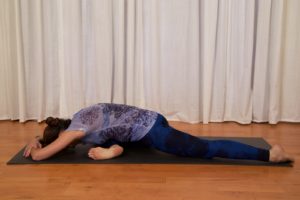
First Variation: Seated Pigeon, using a chair
-
Who should do this pose and why?
Recommendations Seated Pigeon pose does not stretch the hip flexors as the standard pose would. Address this aspect with a complement pose, such as Dancer Pose, any variation (see Anychair Yoga book or Anychair Yoga DVD available on www.siminayoga.com and amazon.com for poses that complement Pigeon, as well for poses working synergistically)
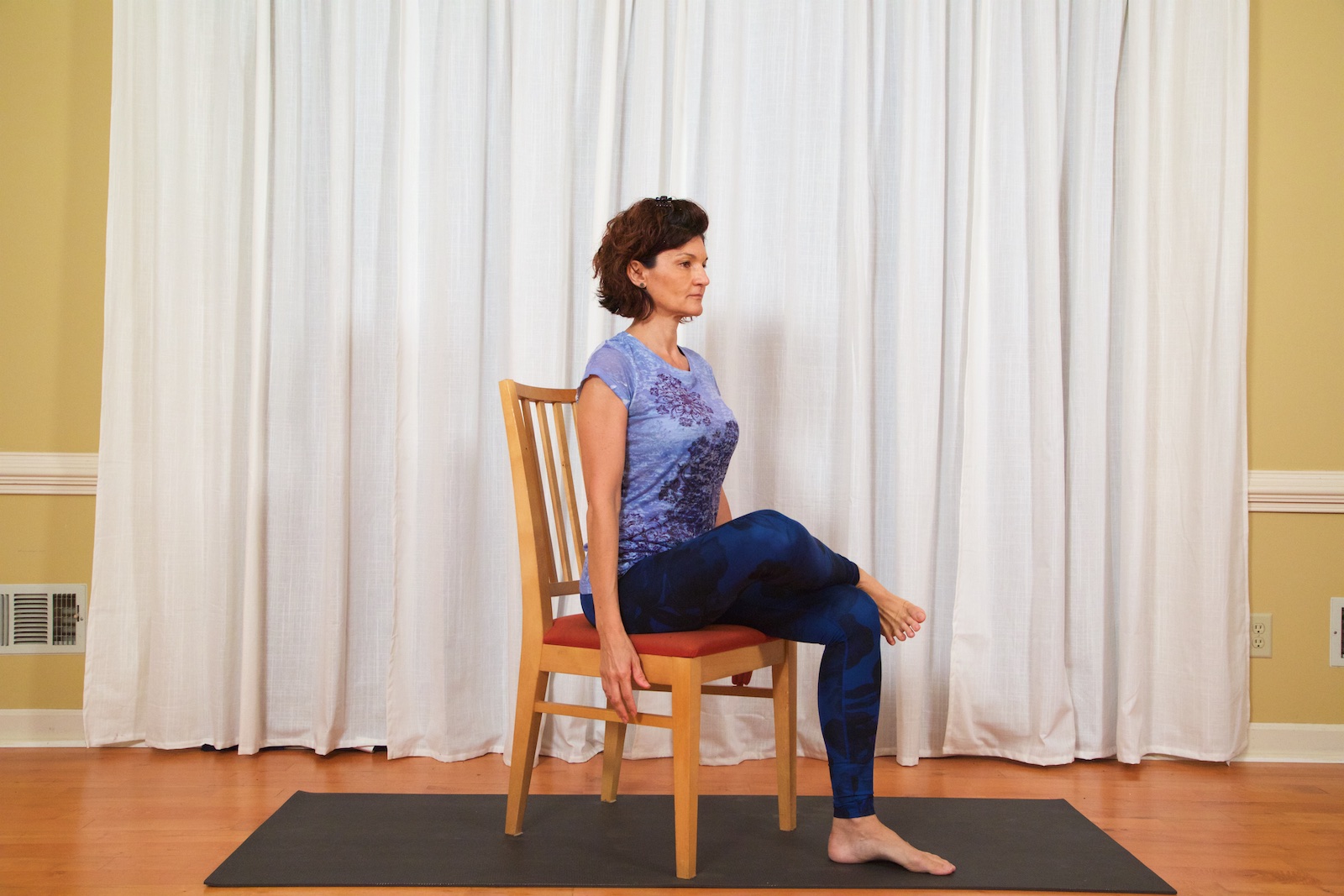 Seated pigeon, using chair, upright
Seated pigeon, using chair, upright
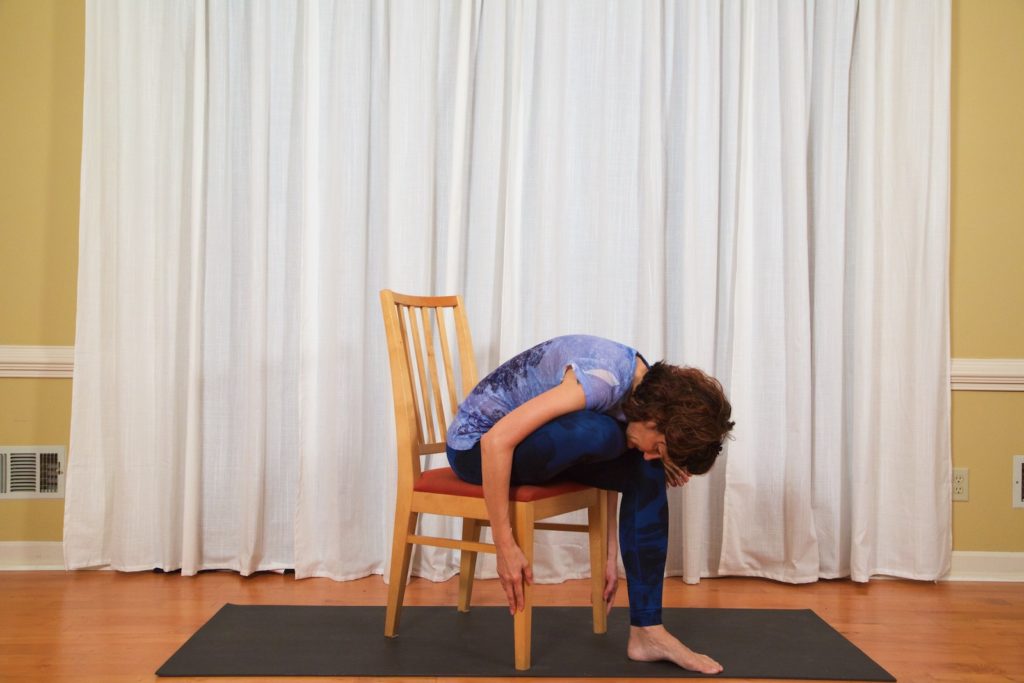 Seated Pigeon, using chair, folding forward
Seated Pigeon, using chair, folding forward
Second Variation: Seated Pigeon, done on the floor
-
Who should to this pose, and why?
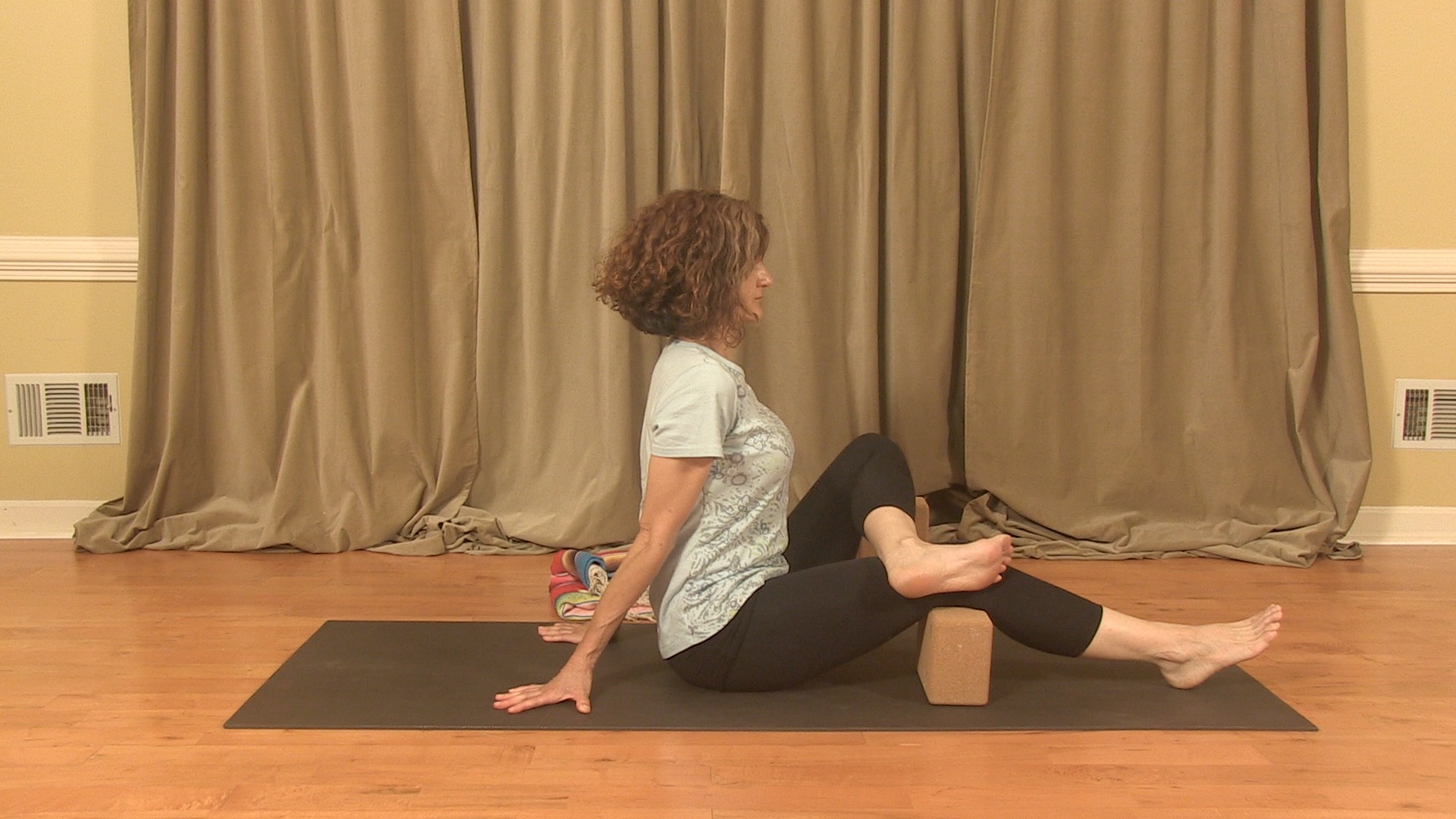 Seated pigeon on the floor, with support
Seated pigeon on the floor, with support
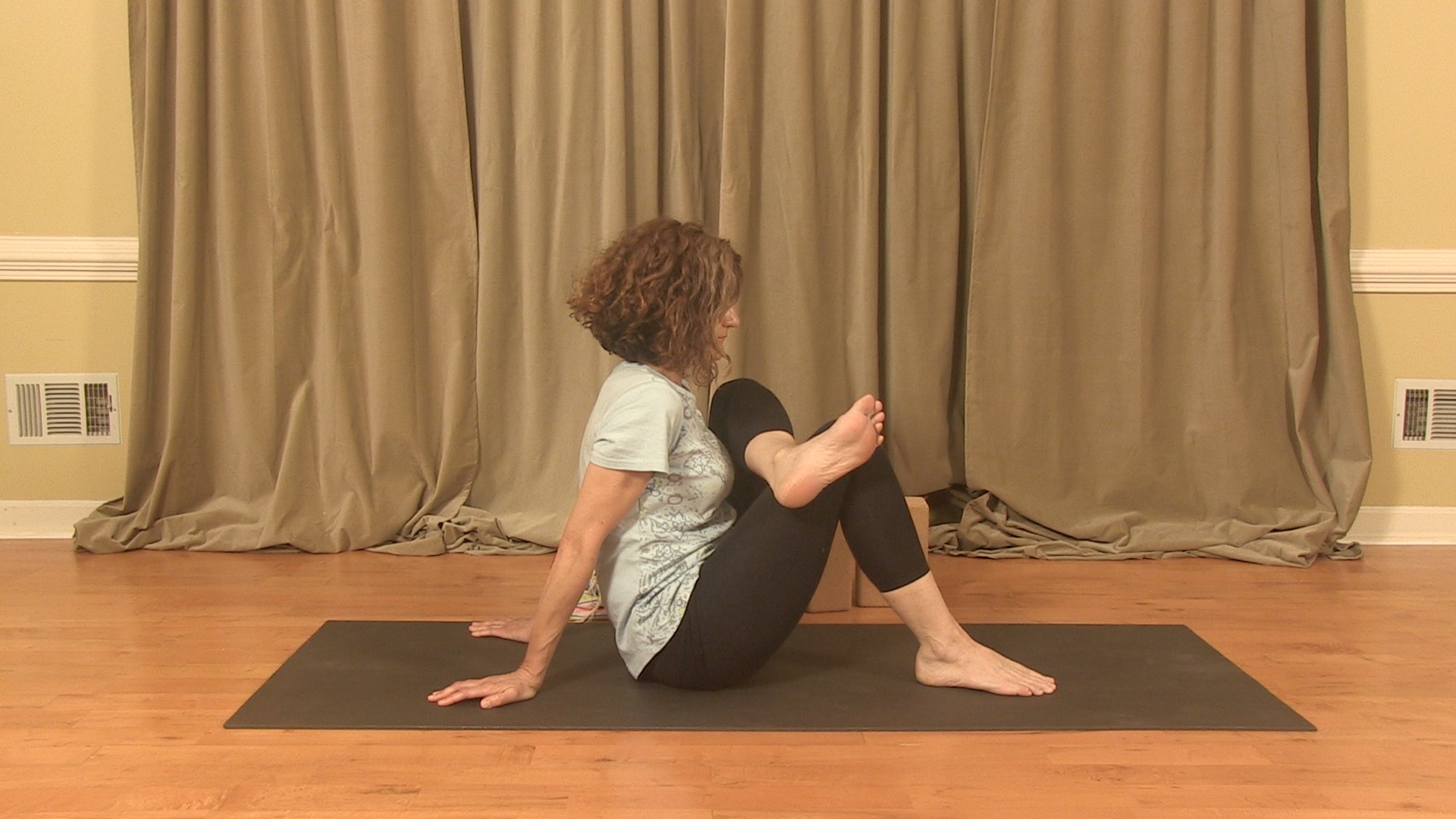 Seated Pigeon on the floor, full flexion
Seated Pigeon on the floor, full flexion
RecommendationsSeated Pigeon pose done on the floor does not stretch the hip flexors as the standard pose would. Address this aspect with a complement pose, such as Locust Pose and/or Bridge Pose, and any variation of these two (see Yoga Fundamentals DVD and EquiFit Yoga available on www.siminayoga.com for poses that complement Pigeon, as well for poses working synergistically)
Third Variation: Reclined Pigeon
-
Who should to this pose, and why?
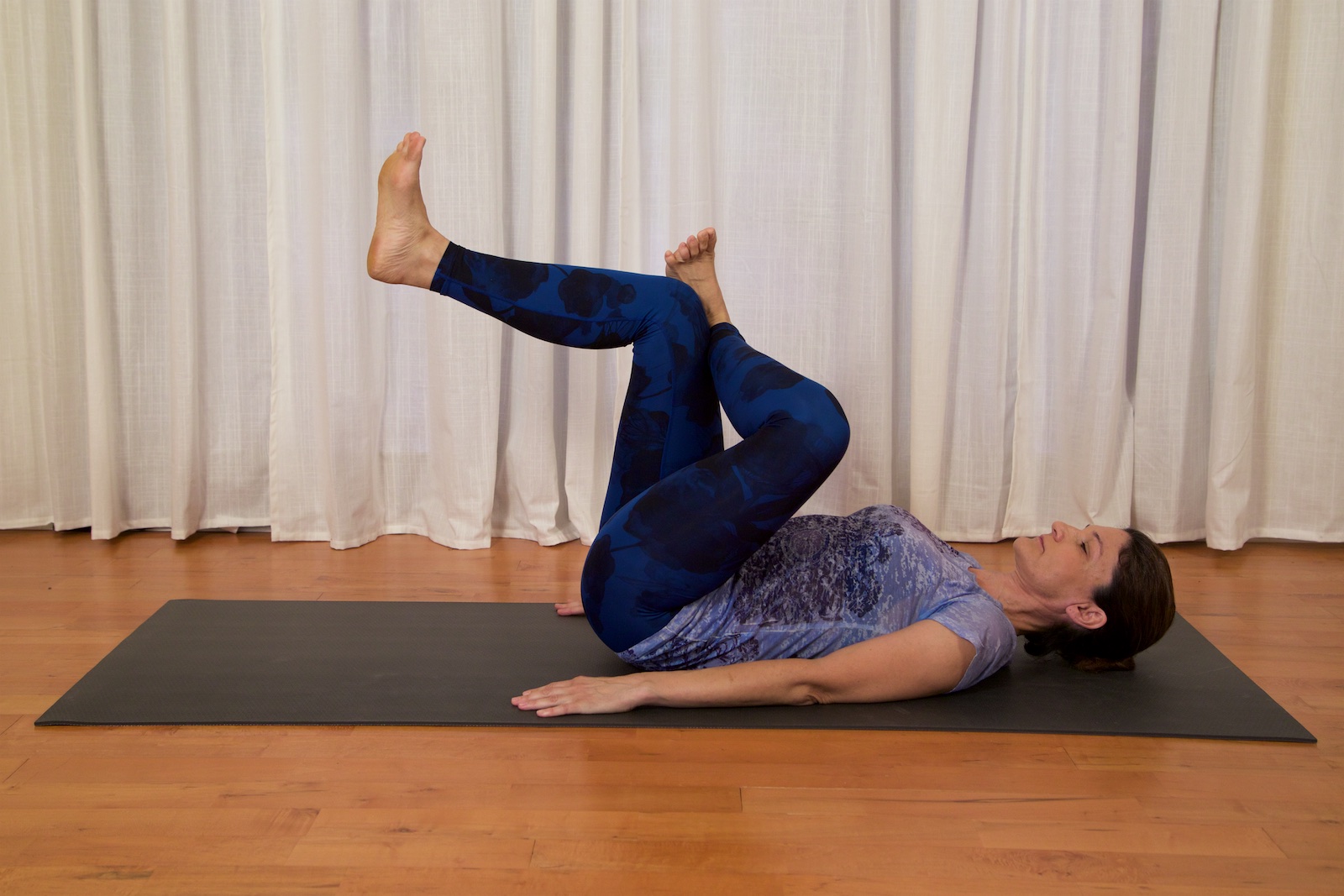
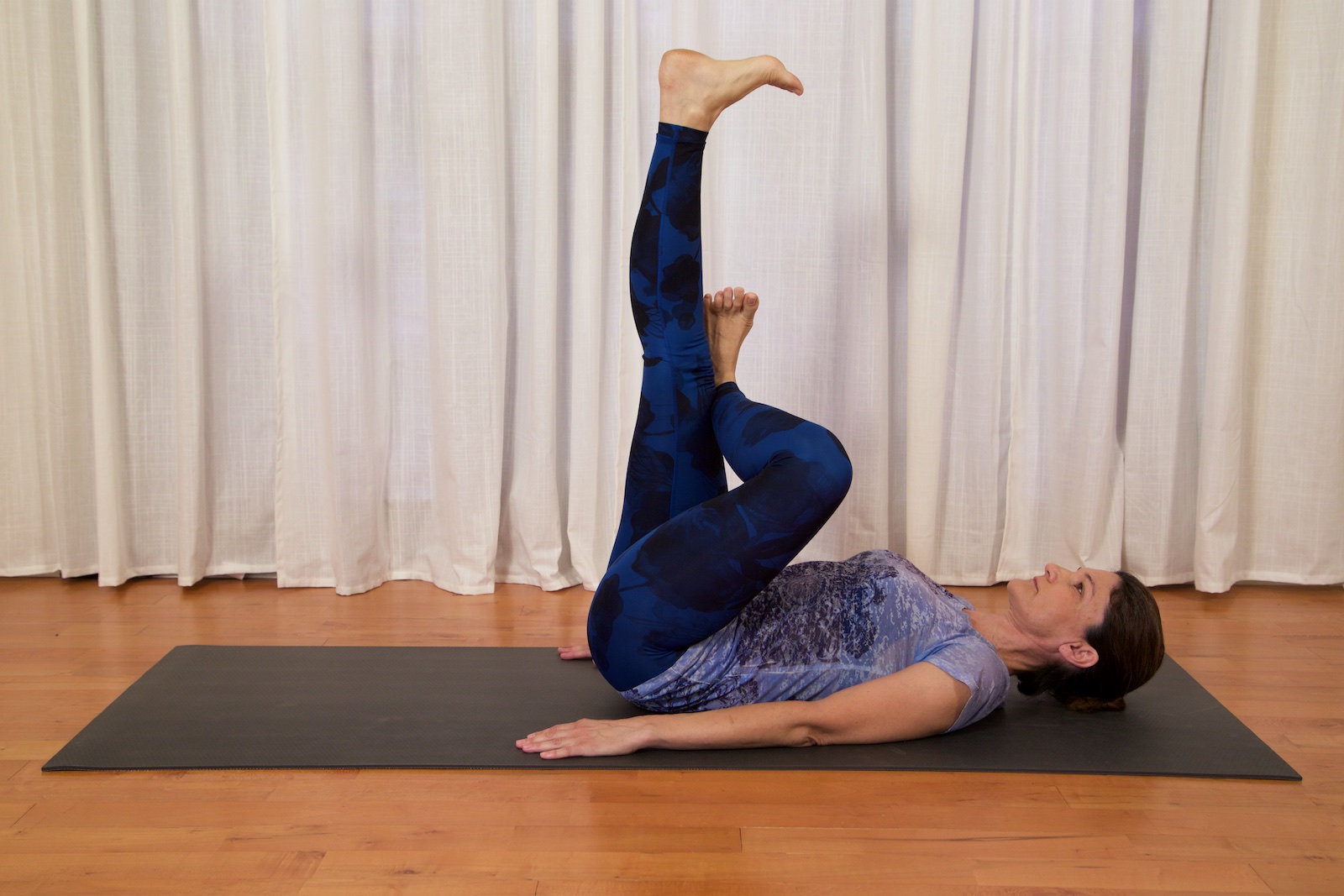
Recommendations Same as Seated Pigeon, Reclined Pigeon pose does not stretch the hip flexors as the standard pose would. Address this aspect with a complement pose, such as Locust Pose and/or Bridge Pose, and any variation of these two (see Yoga Fundamentals DVD and EquiFit Yoga available on www.siminayoga.com for poses that complement Pigeon, as well for poses working synergistically)

Leave a Reply